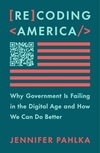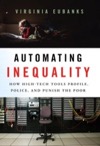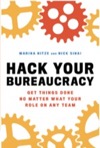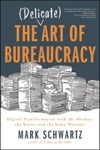This year will mark ten years of my career in civic technology. I wish it were a good year, but these are dark times for the field. Elon Musk’s so-called Department of Government Efficiency has ransacked government IT systems while claiming to do IT modernization. He has obliterated USDS and 18F, both organizations filled with technical staff who actually know how to improve government. DOGE has also turned its sights on federal contracting, using the formerly rarely invoked convenience clauses to terminate contracts for staff, products and services en masse – erasing one of the other avenues for civic technologists to contribute to the federal government.
It seems like a poor time to recommend the field. I admit that I often feel very shaken and hopeless in the present. The damage that has already been done is extensive and probably even more severe than we realize. My assumption was that DOGE’s goal was procurement capture to demolish the government’s technical capabilities enough that it would become more dependent on external contractors and suppliers for everything. However, with recent moves to attack contractors and raze departments to the ground, the main nihilistic goal seems to be complete destruction and salting the earth so that nothing can replace it. Bleak.
And yet, I have to believe that there will be a need to rebuild – that the pendulum will be pushed back, and when that happens, we will need all the help we can get from anybody who will hear the call and pitch in to do the work. If you think that might be you – or, if you are just interested in the topic and want to learn more – I made a reading list of some books that I’ve found highly helpful in my career to explain this field specifically. I hope they will be helpful for you.
Read This First
 The single best book I would recommend that everybody should start with is Cyd Harrell’s A Civic Technologist’s Practice Guide by Cyd Harrell. This relatively slim volume packs a lot into its pages, providing a concrete history of how civic technology is a relatively young field, the differences of working in the public sector vs. the private one, and the dangers of approaching problems with a tech-savior complex that you are there to save everyone with your superior technical sense (DOGE could have benefitted from this advice, if they cared). It also gives advice on ways to contribute that don’t require you to plunge entirely into the field and an overview of various types of entities – federal to local, government or private – that are operating in this space.
The single best book I would recommend that everybody should start with is Cyd Harrell’s A Civic Technologist’s Practice Guide by Cyd Harrell. This relatively slim volume packs a lot into its pages, providing a concrete history of how civic technology is a relatively young field, the differences of working in the public sector vs. the private one, and the dangers of approaching problems with a tech-savior complex that you are there to save everyone with your superior technical sense (DOGE could have benefitted from this advice, if they cared). It also gives advice on ways to contribute that don’t require you to plunge entirely into the field and an overview of various types of entities – federal to local, government or private – that are operating in this space.
General Overviews
I’m going to lead off with an embarrassing confession, I haven’t yet read all of these books, although they are on my shelf. Nothing wrong about them, I just haven’t gotten around to it yet. They do look useful though as general overviews, so I’m sharing them both here.
 In Recoding America, Jennifer Pahlka, the deputy Chief of Technology for Obama and the founder of Code For America, provides a highly-readable overview of the history of civic technology in the federal government with a focus on the work of the last few decades especially. A lot of the anecdotes and history have been told before in various pieces, but Jennifer collects them all together and relates the various teams and initiatives to the overall vision of civic technology. I especially appreciate the attention given to the challenges of modernizing state systems as well, like those in California’s Employment Development Department (EDD) that needed help quickly to handle rapidly rising unemployment claims during the COVID-19 pandemic. She concludes with a new vision of digital capability in government that I fear we are moving even further away from now. The dedication of this book is especially hard to read in our current moment: “To public servants everywhere. Don’t give up.”
In Recoding America, Jennifer Pahlka, the deputy Chief of Technology for Obama and the founder of Code For America, provides a highly-readable overview of the history of civic technology in the federal government with a focus on the work of the last few decades especially. A lot of the anecdotes and history have been told before in various pieces, but Jennifer collects them all together and relates the various teams and initiatives to the overall vision of civic technology. I especially appreciate the attention given to the challenges of modernizing state systems as well, like those in California’s Employment Development Department (EDD) that needed help quickly to handle rapidly rising unemployment claims during the COVID-19 pandemic. She concludes with a new vision of digital capability in government that I fear we are moving even further away from now. The dedication of this book is especially hard to read in our current moment: “To public servants everywhere. Don’t give up.”
 Similar to the approach of A Civic Technologist’s Practice Guide, Power to the Public is a broad overview of the field of civic technology that provides an overview of how we got here with descriptions of the significant players and projects involved before concluding with a vision of how the field can grow. Written for the layperson rather than the expert, I appreciate its attention to details of how technologists effectively work with counterparts in government to build services. Technical problems in this space are often technically simple. Deploying code is often the last step in a process of understanding problems, building consensus and gaining access and trust. Technology is also rarely the solution itself; instead, it is often deployed alongside policy, communications, organizational and sometimes even legislative changes. We work alongside other government staff and not in place of them. I wish this weren’t a lesson that technologists regularly need to relearn.
Similar to the approach of A Civic Technologist’s Practice Guide, Power to the Public is a broad overview of the field of civic technology that provides an overview of how we got here with descriptions of the significant players and projects involved before concluding with a vision of how the field can grow. Written for the layperson rather than the expert, I appreciate its attention to details of how technologists effectively work with counterparts in government to build services. Technical problems in this space are often technically simple. Deploying code is often the last step in a process of understanding problems, building consensus and gaining access and trust. Technology is also rarely the solution itself; instead, it is often deployed alongside policy, communications, organizational and sometimes even legislative changes. We work alongside other government staff and not in place of them. I wish this weren’t a lesson that technologists regularly need to relearn.
 I have read this one. Taking things in a different direction, I highly recommend the book Automating Inequality as an example of the dystopian and very possible world we want to avoid expanding (widespread adoption of AI will only make this situation worse, however). This book examines various ways in which computerized systems were used to create administrative burdens that were ostensibly designed to reduce fraud and waste (gee, that sounds familiar) but were actually designed to take away public benefits from people who deserve them and lock out assistance from caseworkers who want to help improve people’s lives. Technology alone can not solve complicated social problems, and all too often it can make things worse. This book is an apt reminder of that.
I have read this one. Taking things in a different direction, I highly recommend the book Automating Inequality as an example of the dystopian and very possible world we want to avoid expanding (widespread adoption of AI will only make this situation worse, however). This book examines various ways in which computerized systems were used to create administrative burdens that were ostensibly designed to reduce fraud and waste (gee, that sounds familiar) but were actually designed to take away public benefits from people who deserve them and lock out assistance from caseworkers who want to help improve people’s lives. Technology alone can not solve complicated social problems, and all too often it can make things worse. This book is an apt reminder of that.
Legacy Systems
 Sooner or later, every civic technologist will encounter The Mainframe (or similar) – an antiquated system built in the 1980s or earlier, running COBOL or some other older language and secretly underpinning the work of an entire agency (and possibly even a large swath of the economy). Kill It With Fire is a highly readable and practical guide to legacy modernization from a former expert at the USDS. Contrary to the provocative title, it’s often best to take a gradual and deliberate approach to modernizing systems rather than burning it down. There are specific practices outlined in here to achieve that. Moreover, the maligned mainframe often has strengths of its own that can’t be easily replaced by modern distributed cloud-based systems, and can you really say that any code of yours has been in operation for decades? If you find yourself tasked with legacy modernization, read this book before you go charging in.
Sooner or later, every civic technologist will encounter The Mainframe (or similar) – an antiquated system built in the 1980s or earlier, running COBOL or some other older language and secretly underpinning the work of an entire agency (and possibly even a large swath of the economy). Kill It With Fire is a highly readable and practical guide to legacy modernization from a former expert at the USDS. Contrary to the provocative title, it’s often best to take a gradual and deliberate approach to modernizing systems rather than burning it down. There are specific practices outlined in here to achieve that. Moreover, the maligned mainframe often has strengths of its own that can’t be easily replaced by modern distributed cloud-based systems, and can you really say that any code of yours has been in operation for decades? If you find yourself tasked with legacy modernization, read this book before you go charging in.
Handling Bureaucracy
 Similar to the specific focus of Kill It With Fire, Hack Your Bureaucracy is a compendium of different approaches for sidestepping bureaucratic traps to get things done. Bureaucracy is an inevitable component of working in a government context, but it doesn’t have to be a showstopper. This book by two technologists in the Obama administration, Marina Nitze and Nick Sinai, contains a collection of specific tactical moves like “Understand Why” or “Give Real Demos” to understand problems, work around roadblocks, win the trust of stakeholders and get projects prioritized. I use many of these techniques a lot (I particularly like “Play the Newbie Card” when starting on a project), and it’s highly useful to see them all collected in a single place for reference.
Similar to the specific focus of Kill It With Fire, Hack Your Bureaucracy is a compendium of different approaches for sidestepping bureaucratic traps to get things done. Bureaucracy is an inevitable component of working in a government context, but it doesn’t have to be a showstopper. This book by two technologists in the Obama administration, Marina Nitze and Nick Sinai, contains a collection of specific tactical moves like “Understand Why” or “Give Real Demos” to understand problems, work around roadblocks, win the trust of stakeholders and get projects prioritized. I use many of these techniques a lot (I particularly like “Play the Newbie Card” when starting on a project), and it’s highly useful to see them all collected in a single place for reference.
 If you want a more eclectic understanding of why bureaucracy is the way it is, I highly recommend The (Delicate) Art of Bureaucracy as an exploration of the theory of bureaucracy followed by some high-level practices for improving it and sidestepping its problems. The author Mark Schwartz was a CIO within the US Customs and Immigration Service (USCIS), so he has practical experience in nudging stalled systems to completion. His writing style can be remarkably baroque at times – he has a particular affinity for Moby Dick references – but he does a great job of summarizing the theories of bureaucracy, the characteristics of good and bad bureaucracy, and how IT and agile are highly bureaucratic processes that don’t admit it to themselves. From there, he provides some examples of working around paperwork pitfalls at USCIS before ending the book with three different archetypes for bureaucratic transformation: the Monkey (who sidesteps and finds alternate paths through investigation), the Razor (who uses cost reduction and process optimization to pare back bureaucratic waste) and the Sumo Wrestler (who builds up his own bureaucratic responsibility so he can have better control of its restrictions and outcomes). This is a book you should consult if you find yourself struggling to understand why federal bureaucracy is the way it is.
If you want a more eclectic understanding of why bureaucracy is the way it is, I highly recommend The (Delicate) Art of Bureaucracy as an exploration of the theory of bureaucracy followed by some high-level practices for improving it and sidestepping its problems. The author Mark Schwartz was a CIO within the US Customs and Immigration Service (USCIS), so he has practical experience in nudging stalled systems to completion. His writing style can be remarkably baroque at times – he has a particular affinity for Moby Dick references – but he does a great job of summarizing the theories of bureaucracy, the characteristics of good and bad bureaucracy, and how IT and agile are highly bureaucratic processes that don’t admit it to themselves. From there, he provides some examples of working around paperwork pitfalls at USCIS before ending the book with three different archetypes for bureaucratic transformation: the Monkey (who sidesteps and finds alternate paths through investigation), the Razor (who uses cost reduction and process optimization to pare back bureaucratic waste) and the Sumo Wrestler (who builds up his own bureaucratic responsibility so he can have better control of its restrictions and outcomes). This is a book you should consult if you find yourself struggling to understand why federal bureaucracy is the way it is.
What About Procurement?
There is a joke in civic tech circles that eventually every technologist moves from confusion to apathy to enlightenment about procurement. Simply put, everything in the federal space that is not derived from laws and regulations is built on procurement and appropriations of some sort. Procurement is like the Force in Star Wars, not directly visible but a source of power that can be used for good or evil. That said, I don’t personally know of any good books about it, and I’m not going to suggest you read the FAR for fun. If you have suggestions, let me know!
Short and Sweet
Finally, if reading a bunch of books seems a bit too much for right now, I have a collection of various websites and guides that can give a tastes of what the work is like:
- 18F Technology Guides these were originally hosted at 18F’s site, but that was deleted by DOGE as part of its annihilation of 18F. Thankfully, the content was replicated elsewhere by former 18F staff and it provides a treasure trove of tactics and advice for digital transformation.
- Nava PBC Case Studies - Nava PBC is a private contracting company (and my former employer) founded by technologists who helped rescue healthcare.gov when it was foundering. Their case studies provide some examples of how civic technology work can be structured into different projects.
- Ad Hoc ATO Field Guide – By law, every federal IT project needs to obtain an Authorization to Operate (ATO) before it can be publicly launched. This readable guide breaks down the jargon and process for that, and it provides a good illustration of one way in which building software for the government is different from the private sector.